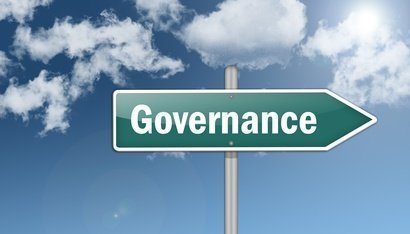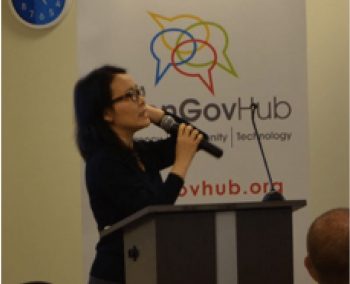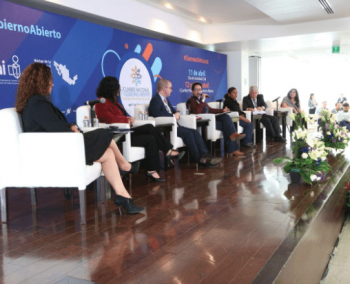The World Bank’s Governance Agenda: Learning to deliver sustainable development results?


by Alan Hudson, Executive Director, Global Integrity July 13, 2016
There has been concern for many months in the governance and development community, in Washington DC and beyond, about the commitment of the World Bank to the governance agenda, and particularly to openness and inclusion. The gap in leadership within the World Bank’s Governance Global Practice has been a topic of lively conversation, with Deborah Wetzel’s arrival as Senior Director earlier this year widely welcomed. And a number of organizations, including Global Integrity, have been paying attention to specific issues such as the move of the Access to Information work from a central team to the regions, or the reduction in funding for the Global Partnership for Social Accountability.
But there’s been rather limited discussion of two items which, to my mind, are bigger parts of a very important picture. One is the World Development Report for 2017, focused on Governance and the Law. The other is the approach proposed on Governance and Institutions – see also the paper on Fragility, Violence and Conflict – as part of the replenishment (funding) discussions around IDA, the World Bank’s fund for low income countries. This blogpost aims to shine a spotlight on these two items, to stimulate discussion, and to encourage officials at the World Bank to take the opportunity they have to set out an approach to supporting governance reform that – with adaptive learning at its core – more clearly connects the governance and results agendas.
The World Development Report for 2017 is due for publication towards the end of this year. The concept note from December 2015 and various presentations – including at the OpenGov Hub in March – raised the hopes of many in the governance community. The World Bank seemed to be moving squarely beyond a “best practice” approach to forms of governance, to a “best fit” approach to governance functions, building on years of experience, informed by a growing constellation of individuals and organizations focused on doing development differently, and inspired by the work of, amongst many others, Matt Andrews, Lant Pritchett and Michael Woolcock (see here for an instance of their work). The concept note for the WDR for 2017 certainly takes important steps in this direction.
But from a number of conversations I’ve been having, it seems: that there are questions within and beyond the World Bank about how much the draft WDR for 2017 adds to the groundbreaking WDR for 2004 on accountability and service delivery and to the innovative insights from the WDR for 2011 on legitimate, accountable and capable institutions; that the acknowledgement that development, and surely governance, is about politics, is causing some predictable concern given the World Bank’s mandate; and that the draft report offers little in terms of operational guidance.
On the IDA18 front, two meetings of the IDA Deputies have taken place so far, with a third planned for October, before a meeting for donors to make pledges (or not, I guess) in December. Governance and Institutions is one of the Special Themes. This was and is hugely encouraging; a real opportunity to embed a smart approach to supporting governance reform within IDA. But what I’m hearing is that while the focus on domestic resource mobilization is welcome, a number of donors – although surely not all – feel that there’s not enough on citizen engagement and that the read across from the WDR2017’s emphasis on function rather than just form, and best fit rather than best practice, and the importance of politics, is unclear.
The challenges faced by the WDR2017 and the IDA18 Governance and Institutions Paper are linked. If the WDR2017 had clearer operational implications it would be easier – although still a challenge, given the three-year cycle of IDA replenishments – for the IDA18 paper to take them on board. This means that there is an opportunity. Progress on sharpening the vision of WDR2017 and its operational implications can and should inform the IDA18 Governance and Institutions paper. For instance, the latter could incorporate policy commitments and indicators on readiness for adaptive learning. Other ways of making the connections and moving things forward would be relatively easy to identify. But the timescale to do this is very tight and tricky, not least with the World Bank’s Governance Global Practice in the process of revisiting its vision, strategy and structure, and a need to get coherence between two parallel processes. However, the opportunity must not be missed. The window for the World Bank to revise the IDA Governance and Institutions paper following feedback from donors at the second meeting in Myanmar in late June is a matter of weeks, not months.
In our view, and as reflected in our strategy, the way forward for the governance agenda is – as the WDR2017 concept note observes – to focus on function more than form, and best fit (albeit informed by other countries’ experience) more than best practice. And then, practically, for external actors such as the World Bank to support the emergence of governance arrangements and institutions that help to address implementation gaps and delivery challenges, including as regards public services. This is a transparency, participation and accountability agenda, that aims to deliver improved development outcomes, through politically-engaged adaptive learning.
External actors can put this into practice, as in many instances they already are, by supporting evidence-based and politically-engaged processes of country-level learning that support the policy cycle from design and implementation, to monitoring and reflecting, and through to adaptation and subsequent iterations. This support might include data, financial resources, convening and connecting. The Open Government Partnership now headed by Sanjay Pradhan, with a sharpened focus on addressing implementation gaps and delivering results, and the Global Delivery Initiative, with a diverse membership, including the Chinese Government, have useful experience to bring to bear. Exploring the value of this approach – a “small g” governance agenda – and learning along the way, is something that all should be able to support. Country-level adaptive learning is ownership, for results, in action.
The World Bank should put this approach at the heart of WDR2017, making sure to develop its operational implications, and then ensure that it clearly informs the IDA18 approach to governance and institutions. By moving forward in this way, the World Bank can help to mainstream and more fully integrate the governance agenda, valuing transparency, participation and accountability not solely as good things in themselves, but because of the contribution they can make to adaptive learning, the local emergence of best-fit solutions to governance-related challenges, and results that citizens care about (see our piece on “the value of open governance” and this piece on “Transparency for What?” by Joseph Asunka at the Hewlett Foundation). In this way, the World Bank can help to ensure that the inclusion of a goal on peace, justice and strong institutions within the Sustainable Development Goals – something which was widely regarded as a big win for the governance agenda – delivers results across the 2030 Agenda for Sustainable Development.
If this has struck a chord, let us know. If you think it’s unrealistic or unhelpful, let us know too. We know that there is much to discuss. And that others have more operational experience and understanding of World Bank processes, dynamics, constraints and opportunities. And that time is tight. But if it were helpful, we’d be delighted to host a conversation at the OpenGov Hub in the coming weeks so that the opportunity to put governance and learning more firmly at the heart of the sustainable development agenda can be seized. Or, for starters, please share your thoughts in the comments.
 |
Alan Hudson
|
| Alan is our Executive Director. |




